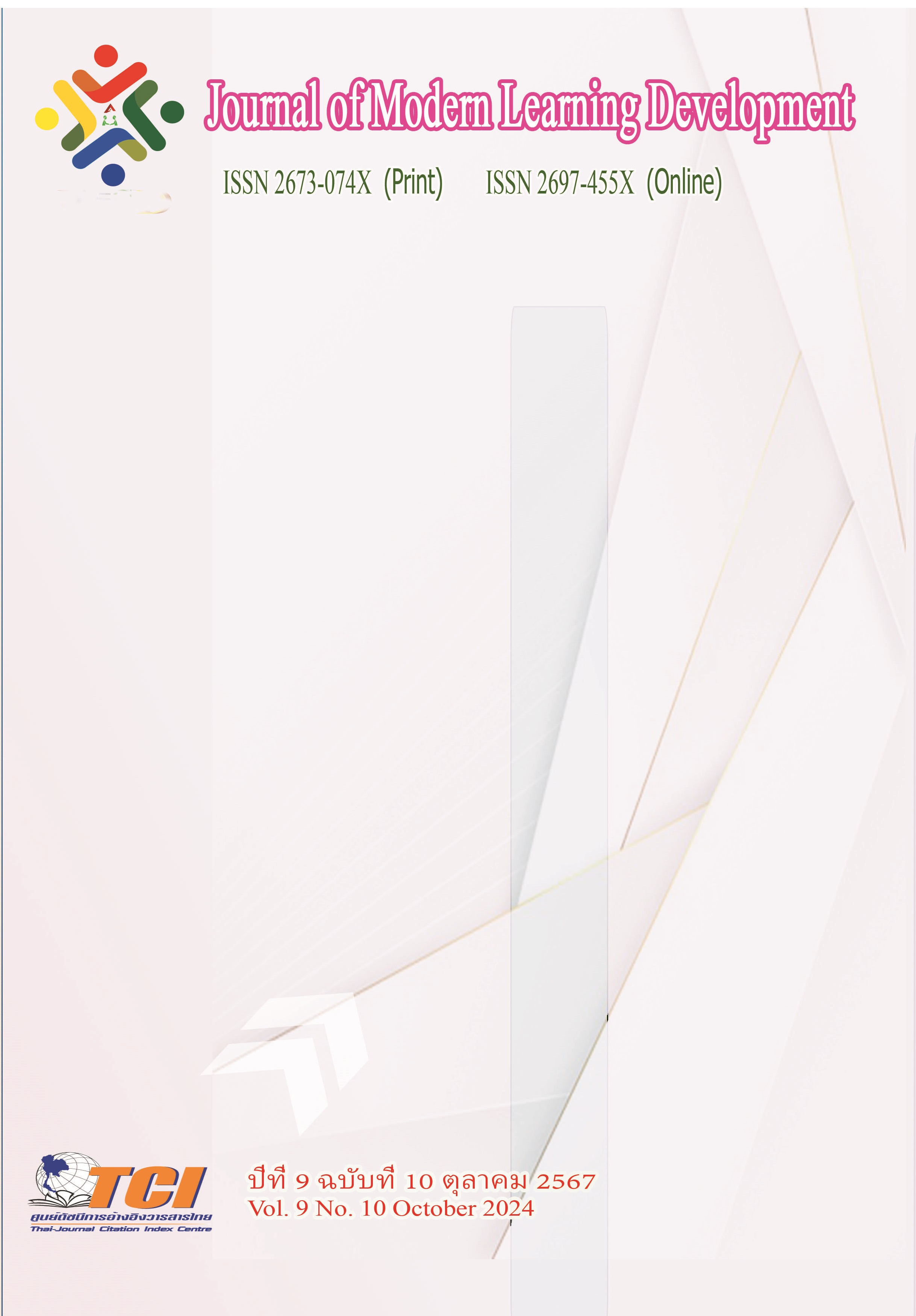Exploration of Traditional Cultural Elements in Contemporary Art: A Discussion on Aesthetic Trends and Cultural Identity
Main Article Content
บทคัดย่อ
The relationship between traditional culture and contemporary art is a topic of considerable interest, as they represent not only the intersection of cultural heritage and innovation but also crucial vehicles for cultural identity and creative expression. Traditional culture, as a treasure trove of history, carries rich value systems, symbolic structures, and aesthetic standards. Meanwhile, contemporary art reflects and explores present-day society, culture, and individual experiences. The relationship between traditional culture and contemporary art involves both symbiosis and conflicting opposition.
Against this backdrop, this study employs a comprehensive research approach, including literature review, case analysis, and field research. By reviewing and analyzing relevant literature, the study aims to explore the historical development, current status, and existing issues and challenges concerning the relationship between traditional culture and contemporary art. The findings provide important theoretical support for cultural research, policy-making, and artistic practice. Through case analysis, specific artworks or projects are examined to discover the integration and innovation of traditional cultural elements in contemporary art, offering theoretical guidance for understanding cultural exchange, innovation, and the promotion of cultural diversity and development. Field research methods are used to investigate public attitudes and responses toward traditional culture and contemporary art, aiming to understand the aesthetic and value of traditional cultural elements in contemporary art, supported by objective research data.
Article Details
เอกสารอ้างอิง
Chang, X. (2022). Application and extension of traditional Chinese materials in contemporary art. Contemporary Art, (01), 106-109.
Chen, X., Yang, Y., & Gong, X. (2021). Research on the application of traditional cultural elements in local brand design. International Brand Observation, (23), 66-70.
Dai, R., & Wu, H. (2023). Integration of traditional culture and contemporary art in contemporary college fine arts education. In Proceedings of the Xi'an Sub-forum of the Smart City Construction Forum 2023 (pp. 295-296).
Huang, T., & Li, Z. (2023). Value, generation, and path of inheritance and development of excellent traditional culture from the perspective of cultural identity. Journal of Xiangtan University (Philosophy and Social Sciences Edition), (04), 177-181.
Li, H. (2023). Public participation and cultural identity in public art. Footwear Craft and Design, (14), 108-110.
Li, R., & Wang, Y. (2024). Research on the value and expression of Chinese traditional culture in contemporary art design. Textile Reports, (02), 75-77.
Su, S. (2023). Protection of Central Plains intangible cultural heritage and regional cultural identity. Cultural Industry, (17), 17-19.
Wang, C. (2024). Integration of traditional Chinese culture and modern design concepts in Chinese art design. Journal of Anyang Institute of Technology, (01), 116-119.
Wei, F. (2023). Analysis of new era Chinese cultural identity from the perspective of cultural philosophy. International Public Relations, (22), 55-57.
Wu, L. (2018). Research on the application of traditional cultural elements in contemporary art design under the concept of "Intangible Cultural Heritage". Beauty and Era (Part I), (11), 18-19.


